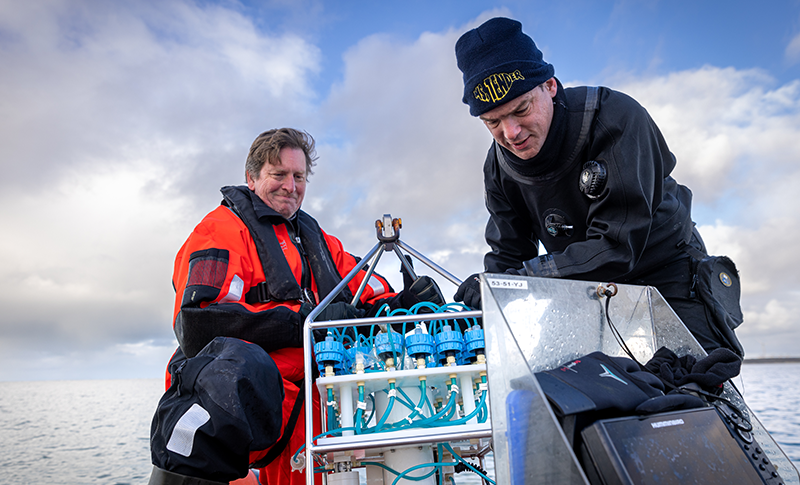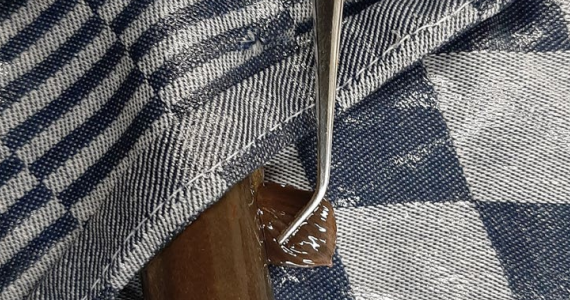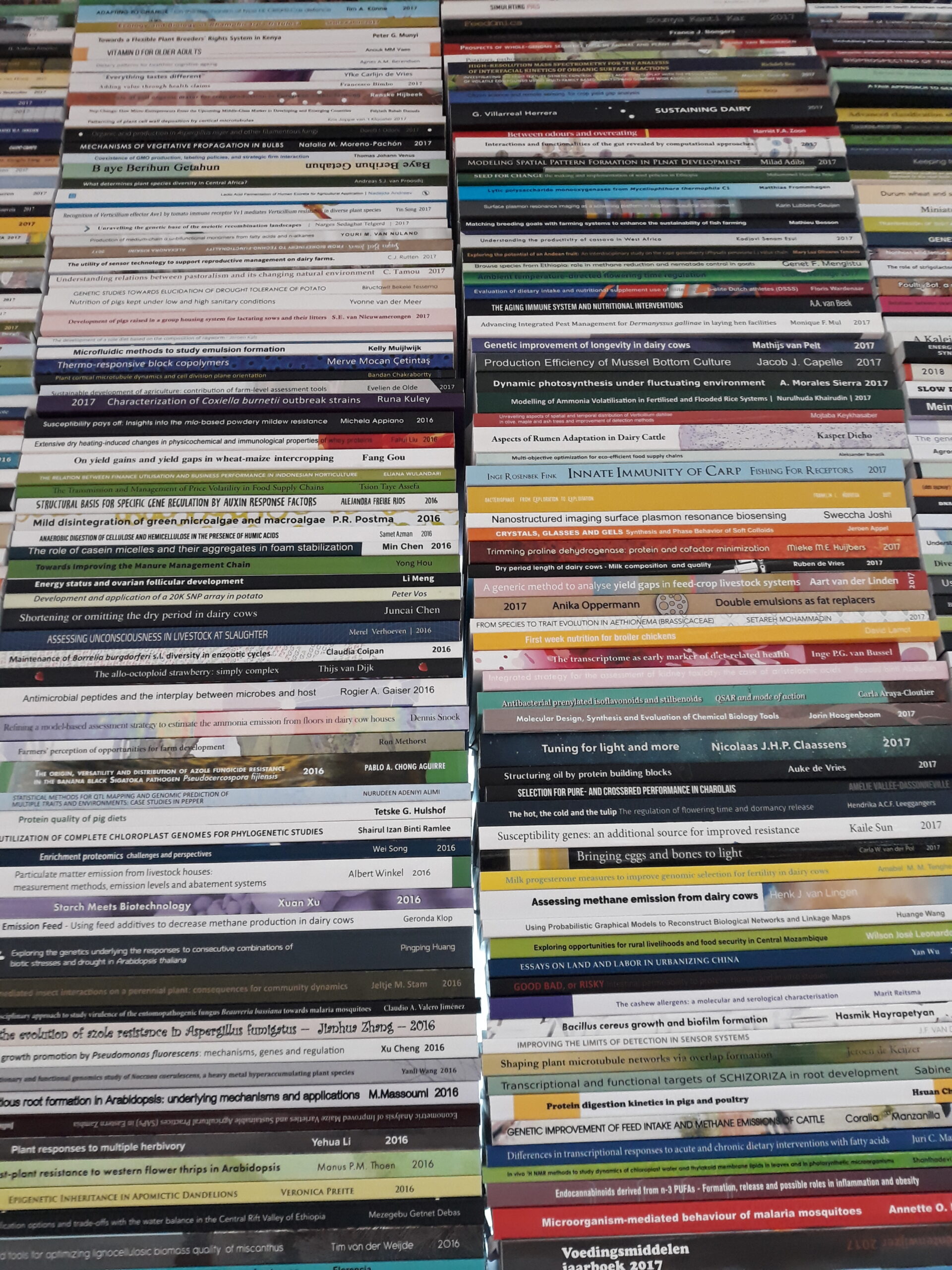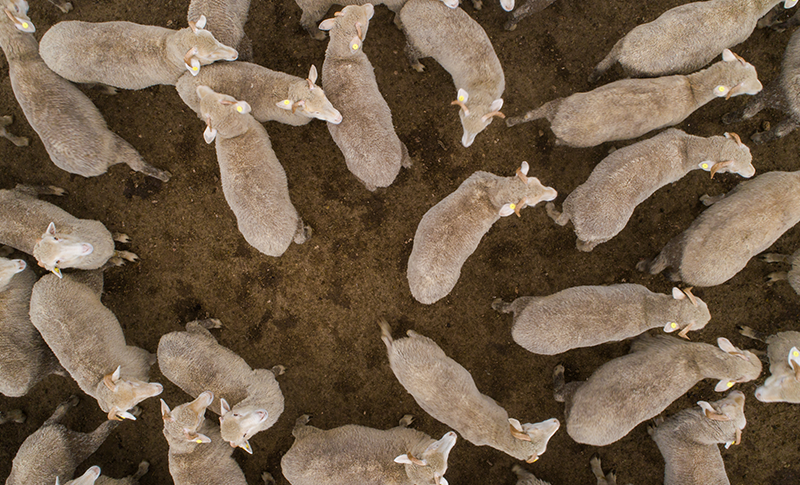Marine biologist Reindert Nijland has developed a sensor box for measuring aquatic biodiversity. So divers are no longer needed.
To know what is going on below the water’s surface, you have to take a look. Traditionally, that meant diving down. But the development of e-DNA (where ‘e’ stands for environmental) has revolutionized this field. Researchers can use the DNA in a water sample to deduce what forms of life are present. The biodiversity sensing box, the Marine Animal Ecology group’s latest toy, marks a major advance in such measurements.
Campus ponds
The plankton microscope will soon be in operation on campus. Marine ecologist Reindert Nijland will be testing it in the campus ponds. The cylindrical device takes photos of the plankton passing in a clearly defined focal plane. What is more, the microscope calculates the plankton density based on the planar volume. Nijland: ‘We already measure the e-DNA, including of fish. It helps to have images of the organisms too.
Collecting and analysing e-DNA is a useful method but it has its limitations. You need to go down into the water to collect samples, but that isn’t easy when the weather is bad or the location difficult to access. ‘Anyway, it is only a snapshot,’ says marine ecologist Reindert Nijland. ‘It is just one point in time somewhere in the sea during high or low tide. Researchers prefer a series of measurements that show developments over time.’
You can programme it to take samples once an hour, once a day or whatever you want
The biodiversity sensing box addresses those issues. The device is suspended or placed somewhere out at sea and then it takes samples automatically. The box was developed as part of the NLAS (Next Level Animal Sciences) programme. NLAS is a four-year Animal Sciences innovation programme with a budget of 12 million euros. Nijland’s measurement device takes sensor technology to the next level.
Test tubes
‘Although we didn’t come up with the idea entirely ourselves,’ Nijland confesses. ‘You can buy the basic setup, which was developed in America to take plankton samples. It operates at depths of up to 5000 metres, which is overkill for use in the Netherlands. We replaced the filters for plankton with ones for e-DNA. We also added more equipment, such as a camera, a hydrophone and a plankton microscope, which lets us measure a lot of things at the same time.’
The core of the device is a grey metal cylinder containing a battery and a mini computer. It controls a pump that sucks in water and distributes it across up to 24 sampling test tubes. Nijland: ‘You can programme it to take samples once an hour, once a day or whatever you want. The water passes through a filter in the mouth of the test tube, which collects the DNA. The DNA is then prepared and fixed using a special liquid to keep it in good condition for several weeks. The filters are collected and analysed in the lab.’
The first tests have now been completed. ‘We placed the device in the North Sea south of Rotterdam, close to the Haringvliet inlet. Salt water passes when the tide is rising and fresh water when the tide is falling. That produces very different DNA pictures, a sign that the device is working properly. Interestingly, at one point you see a seal in the camera images and that is also reflected in the e-DNA sample for the same time point.’
Local DNA
The match is not always that neat, of course. How can you tell whether the DNA that is detected comes from something close by? According to Nijland, DNA can stay intact for several days depending on local conditions. There are a lot of currents in the North Sea, so some of the DNA in the samples comes from further away. Can you distinguish between that and local biodiversity? Yes, thanks to time series. Nijland: ‘If you take samples over a 24-hour period, you can filter out this background DNA as noise, leaving the local DNA as the signal. A student is currently working on this.’
Wind turbines
The biodiversity sensing box opens up possibilities for new kinds of research. One of the projects the device will be used for is BeWild. In this project, WUR and its partners are working on methods for the remote measurement of biodiversity in the vicinity of offshore wind turbines.
However, e-DNA doesn’t tell you everything about life in the oceans. The signal shows which species are present, but not the number of creatures per species. ‘That is why we using other equipment too, such as a camera, which let us determine not just the organism’s identity and sex but also numbers and dimensions.’
At present, the e-DNA is analysed in the lab, where the species are identified using DNA barcoding. A future step will be to do the analysis on site in the water. That would essentially turn the sensing box into a complete underwater lab. Nijland: ‘So the camera will see something swimming past, the device will take a sample and 10 to 15 minutes later you’ll get the result. That is where we want to get to.’

 Marine biologist Reindert Nijland is developing this sensing box to take e-DNA measurements at sea. The device contains a mini computer that controls a pump which sucks in water and distributes it across sampling test tubes. Photo Anne Reitsma
Marine biologist Reindert Nijland is developing this sensing box to take e-DNA measurements at sea. The device contains a mini computer that controls a pump which sucks in water and distributes it across sampling test tubes. Photo Anne Reitsma 

